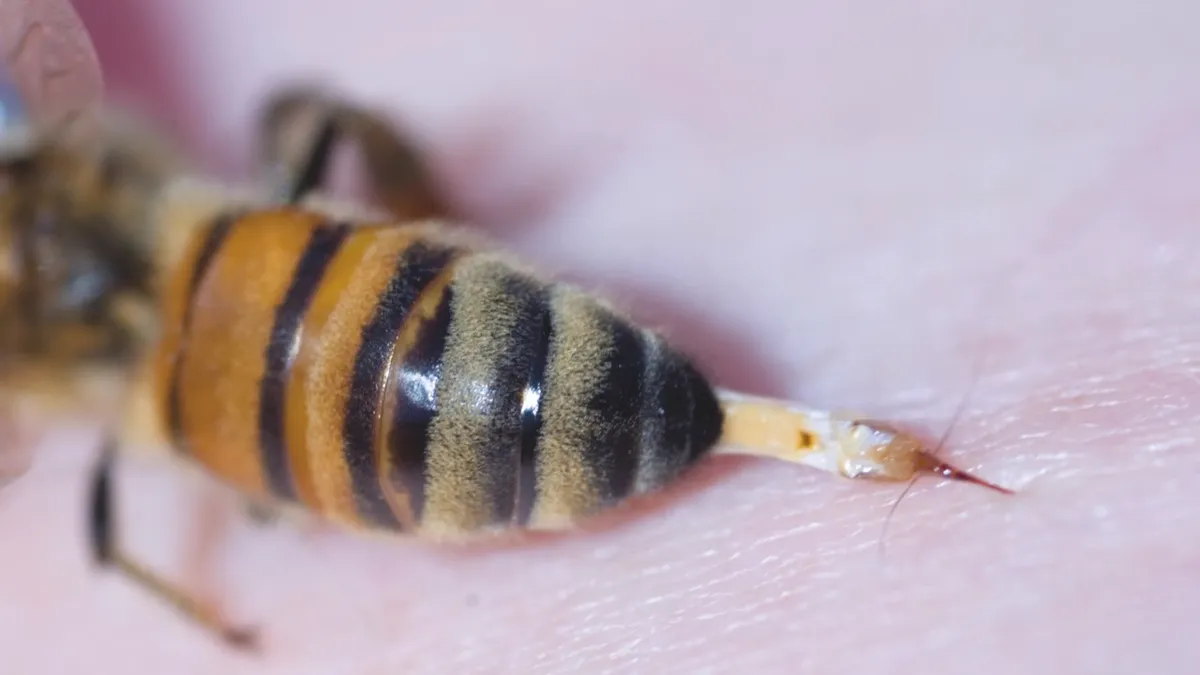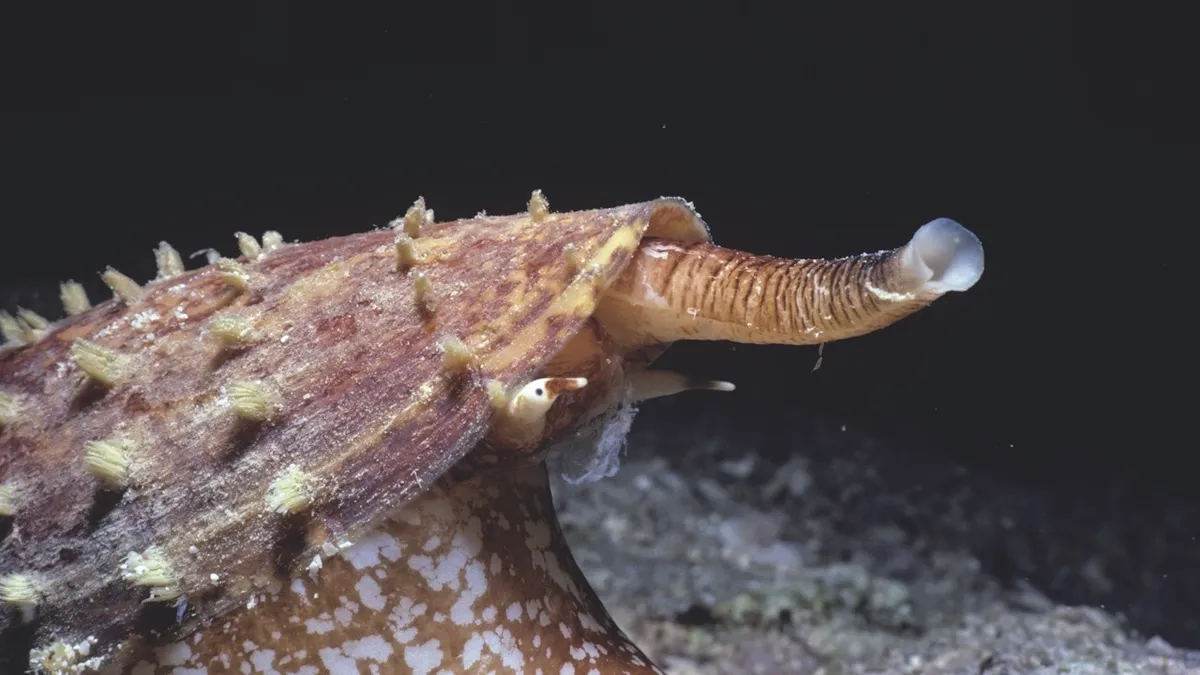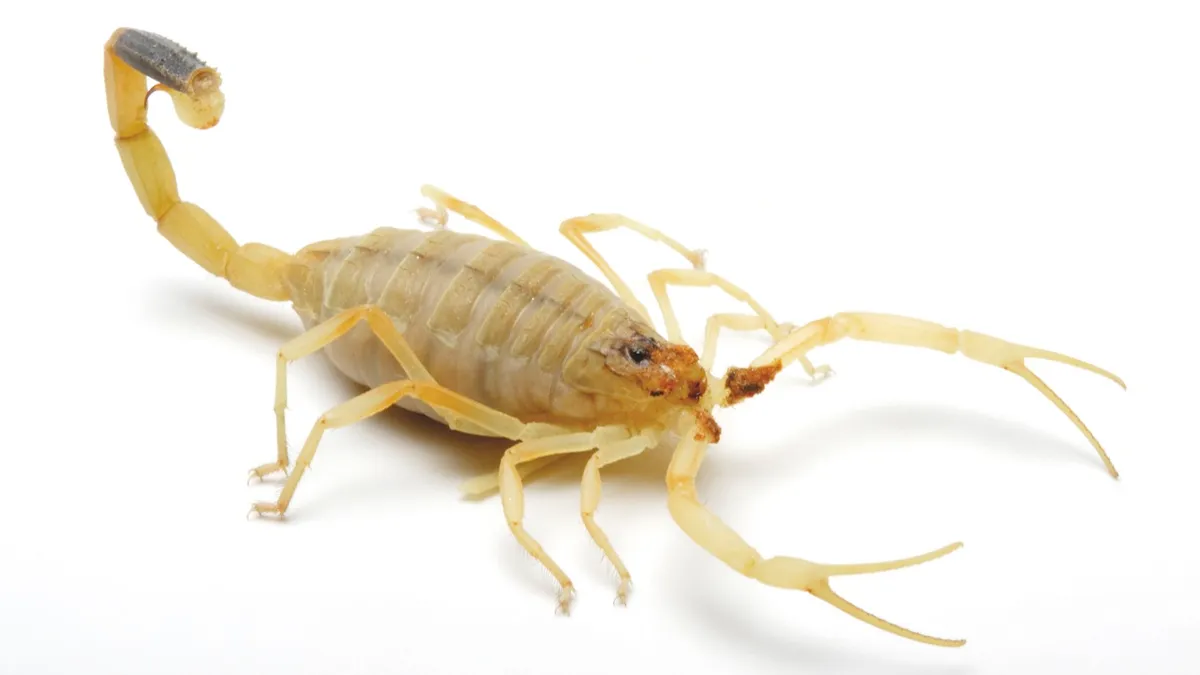To most of us, medicine comes from the chemist. There we can stock up on blister packs of pills, tubes of ointments and bottles of innocuous-looking liquid. But the original sources of drugs can be much more exotic than your local pharmacist. The first HIV drug, for example, came from a sea sponge, while a heart disease drug is derived from the foxglove plant.
You can’t get much more exotic than venomous animals and that’s where scientists are turning their attention. Venoms are cocktails made up of between tens and hundreds of different toxins, usually proteins and smaller chains of amino acids similar to proteins called peptides, along with organic molecules, such as hormones, antibiotics and other compounds that are involved in the metabolic functions of living things. Venoms help animals to immobilise or kill prey, or neutralise predators in self-defence.
To qualify as venom, as opposed to poison, the toxin mixture must be ‘injected’ into another animal. Around 150,000 animal species have evolved the machinery to produce venom and inject it into prey. Some are familiar: snakes with their fangs, or bees and their stings. Others are less well known: the male duck-billed platypus with the venom-bearing spurs on its back legs; the toxic saliva of particular types of shrew; the beautiful but deadly cone snail releasing its harpoon-like proboscis into tiny fish on the seabed...
It’s evolution that’s made venom such a good source of drugs, says Dr Zoltan Takacs, a Hungarian-born scientist-adventurer who founded the World Toxin Bank. “Venom toxins are among the most potent and precision-targeted molecules on Earth,” he explains. “From mankind’s point of view, this makes venom toxins ideal templates for drug discovery.”
Over hundreds of millions of years, the toxins in venoms have been honed to target highly specific components of their prey’s vital bodily functions. Some toxins attack the nervous system, causing paralysis by interfering with nerve-to-muscle communication. Others prevent blood clotting, resulting in massive bleeding. Yet it’s these same dangerous properties that could make them useful. Substances that interfere with the nervous system could make great painkillers, while blood thinning is a vital part of treatment for heart disease.

Don’t try this at home
But this doesn’t mean that doctors will soon be recommending you keep a few venomous snakes and spiders around the house. “Venom is a complex mixture of toxins,” says Takacs. “You need to isolate a single particular toxin to have a safe therapeutic agent.”
Using venoms as a source of drugs isn’t a new idea. Ancient civilisations used venoms in medicines, and the first venom-derived drug of modern times became available in the UK in 1981. There are now around 20 different medications originating from animal venoms, says Takacs, targeting everything from heart disease to diabetes.
But only recently have scientists been in possession of the technology necessary to systematically search through venoms for likely drug candidates. Takacs collects venoms from around the world, often in remote areas, to get his hands on new venom samples. Using Designer Toxins technology, which he co-invented, Takacs fuses natural toxins from different venomous animals into asingle molecule. This technique is used to create vast libraries of toxin variants, such as the World Toxin Bank, that can be screened against known drug targets to find toxins that have the highest promise to treat diseases.
“Imagine fusing pieces of snake, scorpion and sea snail toxins together and ending up with variants that are rooted in nature, yet have new biological properties,” says Takacs. “It almost gives you the luxury of hand-picking and tweaking some of the best pieces of molecules that evolution ever designed.”
With around 20 million venom toxins in nature left to explore, it looks like we may be seeing more and more drugs inspired by nature’s powerful venoms in our bathroom cabinets. So where might they come from?
1
BEES AND WASPS

TARGETS: HIV, breast cancer, skin cancer and rheumatoid arthritis
Of all the venomous bites, stings and punctures, the ones most of us will be familiar with are those from bees. Bee venom, though, contains compounds that could have uses as diverse as combating HIV and helping to treat rheumatoid arthritis.
More than half of the venom of honeybees is made up of a peptide called melittin. Despite its diminutive size, this toxin packs a mean punch – it’s the cause of the burning sensation that comes along with a sting.
In lab tests carried out by researchers at Washington University School of Medicine in the US, gold nanoparticles carrying melittin can puncture holes in the protective envelope of HIV without affecting human cells. While research is in its infancy, these nanoparticles could one day be part of a vaginal gel to prevent HIV transmission.
One of the biggest challenges facing cancer therapy is how to ensure that drugs target only cancerous cells and not healthy ones. Researchers from the University of Leeds and São Paulo State University in Brazil are studying a toxin from the venom of the Brazilian wasp Polybia paulista that could do just that.
It targets structures of fatty molecules on the outside of cancer cells, puncturing holes in the cells and causing vital molecules to leak out. Those same fatty molecules are found on the inside of healthy cells, which means that non-cancerous cells are safe from the wasp toxin’s attentions. It’s early days, though. The toxin has only been tested in the lab, so don’t start welcoming wasps into your home just yet.
Melittin’s puncturing properties could also see it being useful in cancer treatment. It’s been shown to shrink tumours in mice with breast and skin cancers when delivered via nanoparticles. It can also block the inflammatory mechanisms in cells and animals with rheumatoid arthritis.
2
SNAKES

TARGETS: blood pressure, blood clotting, chronic pain
If you were asked to think of a venomous animal, it’s fairly likely that a snake would be the first that springs to mind. They’re also probably the most studied among scientists in search of new drugs.
Many drugs derived from snake venom target the cardiovascular system. Workers on banana plantations who’ve been bitten by snakes often pass out due to severe drops in blood pressure. This led researchers to a peptide in the venom of the pit viper Bothrops jararaca. The drug based on it – blood pressure medication captopril – works by stopping the molecules that would ordinarily prevent blood vessel dilation, allowing them to widen and lower blood pressure. It was the first venom-based drug and continues to be one of the most popular medications on the market.
The southeastern pygmy rattlesnake, found in the US, has potent venom that stops blood from clotting and causes profuse bleeding. One of its toxins has been developed into a drug called eptifibatide that is used in people who are at risk of having a sudden heart attack. It stops platelets in the blood from sticking together, preventing the blood clots that can cause heart attacks and strokes. A similar toxin, from the venom of the saw-scaled viper, has the same target and is the basis of the drug tirofiban.
Another heart disease drug, currently in clinical trials, is cenderitide, which is made of a peptide from the eastern green mamba fused with another peptide from human blood vessel cells. And France’s Institute of Molecular and Cellular Pharmacology is researching a toxin from the black mamba as a possible new painkiller, after studies in mice found it to be as powerful as morphine.
3
CONE SNAILS

TARGETS: Chronic pain, Alzheimer’s, Parkinson’s, schizophrenia and lung cancer
These predatory carnivorous sea snails are found mainly in the warm Indian and Pacific Oceans and their toxins are already proving useful as painkillers. Their ‘bite’ comes from a modified tooth that is projected out of the snail’s mouth and injects venom into its prey, usually fish, instantly paralysing it. Once immobilised, the prey can be engulfed and digested by the snail.
While it’s bad news for the fish, some of these same toxins have shown painkilling effects in humans. There is already a drug on the market, the morphine-like ziconotide, which is used to treat severe chronic pain by administering it direct into the spinal fluid. It is a synthetic copy of a peptide from the venom of Conus magnus, also known as the magical cone.
Another snail toxin is being investigated by University of Utah for its ability to affect nicotinic receptors in the brain which, as well as being involved in tobacco addiction, can play a role in Alzheimer’s disease, Parkinson’s disease, schizophrenia and lung cancer. And with each cone snail species producing its own distinct venom, there are probably plenty more where they came from.
4
SPIDERS, SCORPIONS AND CENTIPEDES

TARGETS: Cancer, muscular dystrophy, chronic pain,erectile dysfunction
Scorpion venom could be medically useful as a way of marking up brain tumour cells for surgery, as it’s tough for surgeons to identify where a tumour ends and healthy cells begin. If they err on the side of caution, cancer cells get left behind. If they get too knife-happy, then healthy cells are cut out alongside cancer. Chlorotoxin, a component of venom from the cheerily named deathstalker scorpion, binds to tumour cells. Adding a fluorescent tag means that tumours ‘light up’, allowing a surgeon to clearly see their boundaries. This ‘tumour paint’, developed by researchers at the Fred Hutchinson Cancer Research Center in the US, has been tested in animals and is now being trialled in people.
Spider venom also appears to be a rich source of compounds for drug development, with toxins believed to have the potential to variously treat muscular dystrophy, chronic pain and erectile dysfunction.
Staying with arthropods, studies by researchers from the University of Queensland in Australia and China’s Kunming Institute of Zoology point to a peptide from centipede venom having the potential to be a more effective painkiller than morphine, possibly without some of the side effects, such as addiction. The Chinese red-headed centipede, which produces the venom, is a pretty significant size, coming in at a whopping 20cm long.
5
SEA ANEMONES

TARGETS: Multiple sclerosis, rheumatoid arthritis, psoriasis, lupus
Native to the Caribbean, the sun anemone uses stinging cells in its tentacles to deliver venom to its prey, stunning small fish and other sea creatures before shovelling them into its mouth.
Anemone venom peptides continue to pique the interest of scientists. One promising compound forms the basis of an experimental drug called dalazatide that’s ready to undergo phase II clinical trials for treating autoimmune disease. Instead of suppressing the whole immune system like existing drugs, it very selectively blocks an ion channel in the particular type of immune cells that go haywire in autoimmune diseases such as multiple sclerosis, rheumatoid arthritis, psoriasis, and lupus. Kineta, a Seattle-based biotechnology company, is developing the drug.
6
LIZARDS

TARGETS: Diabetes
Heard of the Gila monster? These lizards are the biggest in the US and possess venomous saliva. They also claim an unusual ability to eat as little as three big meals a year, while managing to keep their blood sugar stable. Back in the early 1990s, researchers discovered a component in the lizard’s venom that mimics the activity of a human hormone that stimulates insulin release when blood sugar levels rise. Exenatide, an injectable drug based on the toxin, helps people with diabetes maintain healthy glucose levels and even lose weight.
- This article was first published in June 2016
